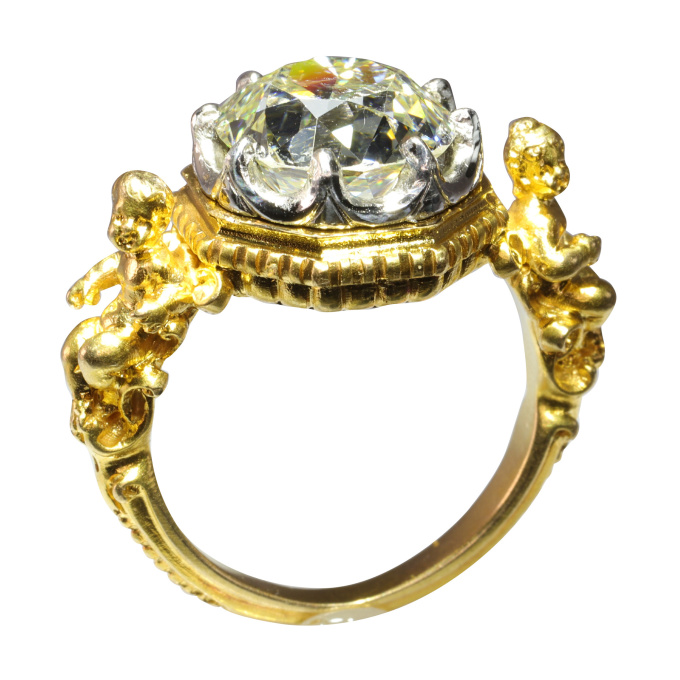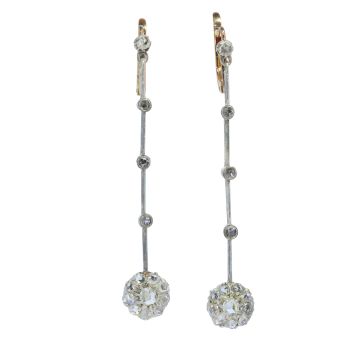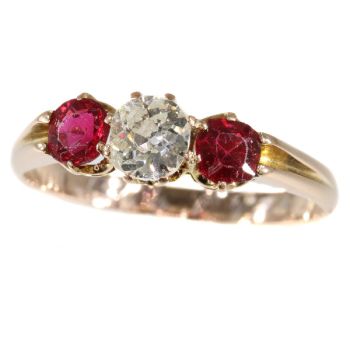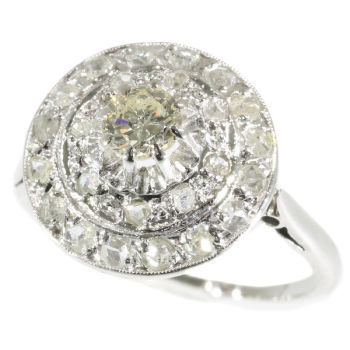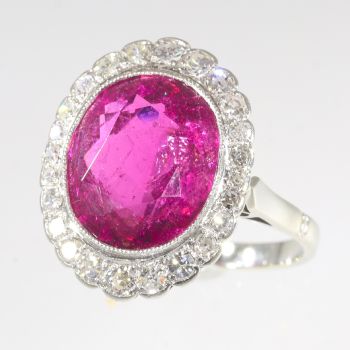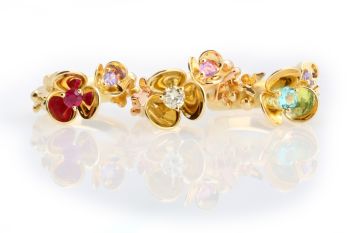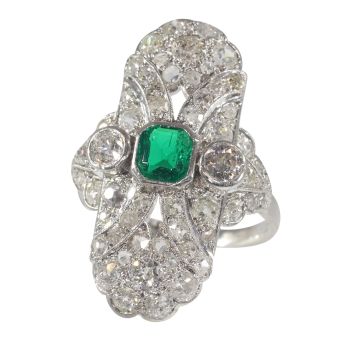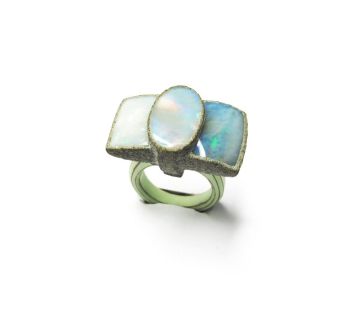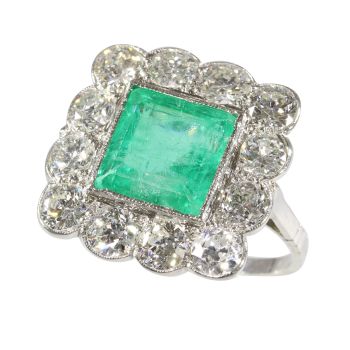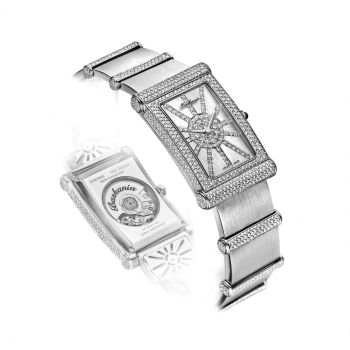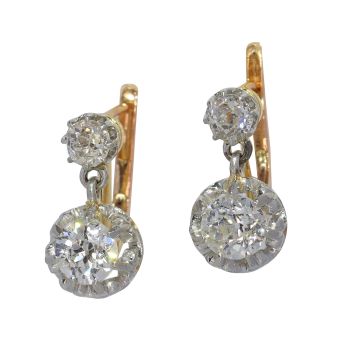Wièse's 4.86ct Diamond Ring, a Neo-Renaissance Legacy 1900
Wièse
Adin Fine Antique Jewellery
- Over kunstwerk
This Late-Victorian Neo-Renaissance ring by Jules Wièse is a museum-quality marvel in Haute Joaillerie. Crafted in France from 18K yellow gold and platinum, the ring incorporates two putti, symbolic of love and innocence, adding layers of historical andemotional meaning. At its core lies a 4.86-carat old European cut diamond. Wièse's craftsmanship is renowned, even cited in multiple academic books on 19th-century jewellery. Authenticated by Wièse's signature and French hallmarks, this ring is apinnacle of craftsmanship and a timeless heirloom, captivating collectors and destined for future generations to be amazed by its uniqueness.
Antique jewelry object group
ring
Condition
excellent condition
more info on our condition scale
Country of origin
France
Style
Victorian / Neo Renaissance
more info on styles
Style specifics
Neo-Renaissance jewellery refers to pieces inspired by the art and culture of the Renaissance period, which spanned from the 14th to the 17th centuries. Created primarily in the late 19th and early 20thcenturies, Neo-Renaissance jewellery aimed to replicate the grandeur and intricacy of its historical predecessor. Artisans of this movement often utilised traditional materials like gold, enamels, and precious gemstones, meticulously crafting them into elaborate designs that featured a variety of motifs, such as mythological scenes, putti, and intricate floral patterns.
The Neo-Renaissance movement was largely a European phenomenon, with France being a key player in its development. Renowned jewellers like Jules Wièse elevated the craft to new heights, creating pieces that were not mere replicas but original works of art that incorporated Renaissance elements. These jewellery pieces were considered the epitome of luxury and sophistication, valued not just for their materials but also for their exquisite craftsmanship and detailed ornamentation. They are now highly sought after by collectors and can be seen as timeless heirlooms, capable of captivating future generations with their unique blend of history and artistry.
Period
ca. 1900
Events & facts of this era, poetry of this era, fashion of this era.
Source of inspiration
Renaissance
Theme
two putti, one male, one female
The use of two putti—one male, one female—could symbolise romantic or divine love, a union of opposites, or the harmony and balance achieved through such a union.
Material
18K yellow gold and platinum (touchstone tested)
more info on precious metals
Extra information
Louis Wièse was the son of famed 19th-century French jeweller Jules Wièse and continued his father's legacy of exceptional craftsmanship. Like his father, Louis excelled in creating intricate designs inspired by historical and religious themes. His work, often executed in gold and featuring detailed ornamentation, represents some of the finest examples of 19th-century French jewellery. Louis Wièse contributed to maintaining thefamily's esteemed reputation, with pieces today equally coveted by collectors and displayed in significant museums globally.
Diamonds
One old European cut diamond with an estimated weight of ± 4.86ct colour and clarity L, si1 (see pictures for HRD certificat)
Birthstones
Diamond is the birthstone (or month stone) for April.
more info on birthstones
Brand
Wièse
Signature
Wièse (see pictures)
Hallmarks
Wièse mastermark and the French control mark for 18K gold representing an eagle's head that was in use in France from about 1838. (see pictures for close ups)
more info on hallmarks
Dimensions
width top of ring 1,37 cm (0,54 inch)
see picture with a ruler in millimeters and inches
Weight
10,70 gram (6,88 dwt)
Ring size 52
more info on ring sizes
Adin Reference Nº
20027-0039
Copyright photography
Adin, fine antique jewellery
Sources
- Le Bijouterie Francaise au XIX Siècle par Henri Vever (volume 2 page 213 for similar ring)
- Henri Vever French Jewelry of the Nineteenth Century (page 1013)
- Jules Wièse und sien Atelier (similar rings in the book)
- Pariser Schmuck (page 49 for a ring in the same idea & page 44 for the Wièse mark)
- Dictionnaire des joailliers, bijoutiers et orfèvres en France de 1850 à nos jours By: L'École des Art Joailliers avec le soutien de Van Cleef & Arpels.
Additional information
our latest acquisitions
jewelry glossary
wall of fame
visit us in Antwerp
subscribe to our mailinglist
- Over kunstenaar
In de tweede helft van de negentiende eeuw begonnen goudsmeden steeds meer inspiratie te putten uit vervlogen tijden, waarbij ze oude en middeleeuwse artefacten omarmden en lang vergeten technieken nieuw leven inblazen. In Frankrijk wonnen de stijlen neogotiek en renaissancerevival bijzondere populariteit en smolten samen tot wat bekend werd als de 'stijlkathédrale'.
Een van de uitblinkers van deze designstroming was Jules Wièse (1818-1890). Hij maakte in 1839 de reis van Berlijn naar Parijs en begon een carrière bij het gerenommeerde atelier van juwelier en zilversmid Froment-Meurice. Deze ondernemende ambachtsman klom snel op in de gelederen en vervulde in 1844 de rol van werkplaatschef. Het jaar daarop nam hij de moedige stap om zijn eigen werkplaats op te richten aan de rue Jean-Pain-Mollet 7. Wièse veroverde al snel een aparte niche voor zichzelf, gespecialiseerd in de creatie van ingewikkelde sieraden en kunstvoorwerpen in zilver en goud.
Zijn uitmuntende vakmanschap bleef niet onopgemerkt. Wièse ontving onderscheidingen op de Exposition Industrielle van 1849 en in 1855 ontving hij een eersteklas medaille op de Exposition Universelle. Een criticus merkte in zijn commentaar op zijn werk op de tentoonstelling van 1855 op: "Het belang van zijn stukken en zijn gedurfde experimenten onthullen een waardering voor kunst en schoonheid die erkenning door de jury verdient, zelfs in het meest bescheiden werk." Wièse's opmerkelijke vaardigheid en originaliteit kregen al snel internationale bekendheid toen hij werd geëerd met een onderscheidingsmedaille op de Great London Exhibition van 1862.
Het werk van Wièse was een harmonieuze samensmelting van middeleeuwse motieven en traditionele ambachtelijke methoden. Hij liet zich inspireren door de Arthur-legende, ridderverhalen, gotische architectuur en verschillende kunstvormen uit die tijd. Zijn sieraden hadden vaak een zorgvuldig aangebrachte kwikoxide-afwerking, waardoor ze een antiek, zwart uiterlijk kregen. In het geval van gouden voorwerpen werd soms juweliersrouge gebruikt om ze het uiterlijk te geven van pas opgegraven schatten.
In 1880 ging Jules Wièse met pensioen en gaf de leiding van de werkplaats over aan zijn zoon Louis. Door Vever beschreven als "een uitzonderlijk bescheiden en werkelijk getalenteerde kunstenaar", bleef Louis sieraden produceren in de revivalist-stijl tot de sluiting van het bedrijf in 1923.
De sieraden van Wièse, bekend om hun charmante excentriciteit en voortreffelijke vakmanschap, blijven zeer begeerd en gewild bij verzamelaars en kenners. Voorbeelden van zijn werk zijn te vinden in gewaardeerde instellingen zoals het British Museum, het Victoria & Albert Museum en het Musée des Arts Décoratifs in Parijs.
Bent u geïnteresseerd om dit kunstwerk te kopen?
Artwork details
Related artworks
- 1 - 4 / 24
- 1 - 4 / 24
Onbekende Kunstenaar
Vroege Art Deco broche1920
Prijs op aanvraagAns Hemke-Kuilboer Juwelier & Antiquair
1 - 4 / 24- 1 - 4 / 12


